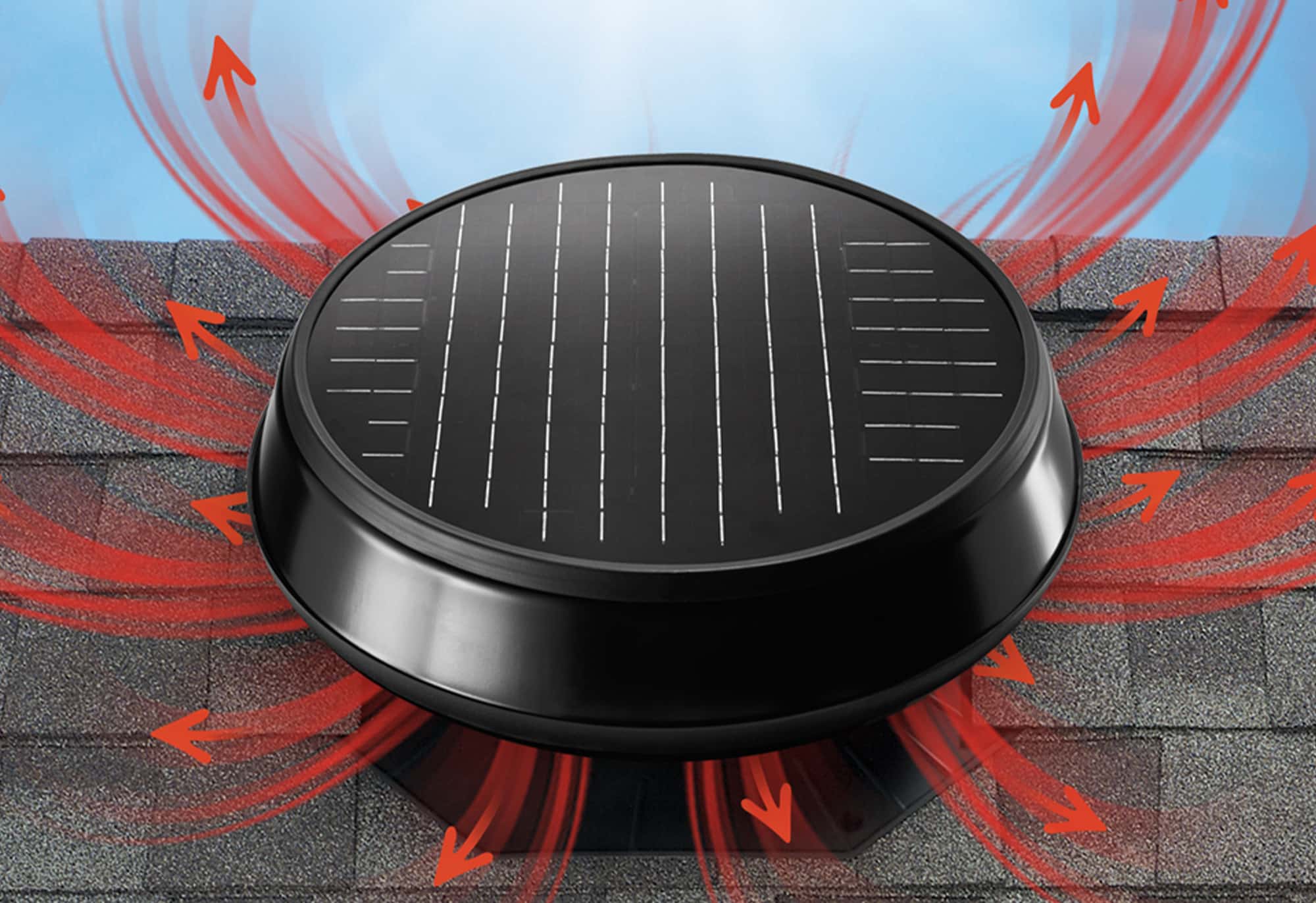Keeping your home cool in the summer is important. When many people think of comfort during hot summer days and nights, they think of keeping the air conditioning strong. In truth, attic ventilation can help keep most homes more comfortable by removing excess heat with the added bonus of lower utility bills. Still, many remain skeptical of solar attic fans and roof vents, so The Solar Guys wanted to offer a list of pros and cons that explain how these devices work and help keep any home in Florida cool.
Some of the questions we will try to answer for prospective customers include:
- Do solar attic fans really work in Florida?
- Are solar attic fans worth it?
- What is my best option for buying a solar attic fan in Florida?
Let’s explore the pros and cons of using solar roof fans and vents for attic ventilation.
Understanding the Effects of Heat and Humidity on Your Home
With 90° plus temperatures and sticky humidity, Florida residents often escape to the inside of their homes and air-conditioned comfort. For those whose homes aren’t properly insulated, or have no air conditioning, what happens? Well, attics trap solar heat, which then readily transfers to living spaces, forcing those with air conditioning to adjust the thermostat down, which in turn causes utility bills to go up.
Without proper ventilation and air exchange, trapped Florida humidity can damage insulation, deteriorate your roof, cause fungal decay, and delaminate plywood. Attic ventilation in the form of a solar attic fan can help, and since it is powered by the sun, you won’t use additional electricity. In result, solar attic fans remove excess heat from your home.
The Pros of Solar Attic Fans
Solar attic fans provide a number of benefits for you and your home. These include:
- Keep Your Attic Cooler in Summer – In warmer climates, like Florida, the heat buildup in your attic, not only radiates to the living spaces below, but can also damage your roof, insulation, and structural integrity of your home. The added heat makes your air conditioner work harder and means higher utility bills.
- Reduce Moisture in Your Attic – Summer’s humidity and moisture can enhance the growth of fungus and molds in your attic while damaging your home’s structural supports as well.
- Go Green – Solar attic fans are environmentally friendly, harnessing the sun’s power without the need for electricity. As a renewable energy source, your solar attic fan will help reduce your carbon footprint and help you save money in the process.
- Energy Conscious Solar Power – Known as photovoltaic power, solar power used by the solar attic fan is not only free but can help reduce your utility bills by pushing hot air out of your attic. These fans are also maintenance-free, and easy to install and maintain. On cloudy days, you don’t need to run an attic fan, and with solar attic fans, you only access the energy you need on the days you need it most, the hottest, sunniest days of the year, with no added expense.
- A Good Investment – For Florida residents, more than 250 days of sunshine are normal, making a solar attic fan a good investment designed to make your home more comfortable and lower your energy costs. Solar attic fans also provide curb appeal adding an aesthetic bonus of a sleek, seamless low profile look that testifies to environmental consciousness and electrical savings.
The Cons of Solar Attic Fans
While there aren’t many, solar attic fans do have a few cons, like these:
- More Costly than Traditional Models – Solar attic fans are most costly on the front end than traditional attic fans, but the initial expense is ultimately made up in energy savings over time.
- Most Homes Need Two – In most homes, you’ll need two solar attic fans to move the air needed and enhance utility savings.
- Solar Attic Fans Require Direct Sunlight – Solar attic fans require direct sunlight to work as their energy source is the sun. Your solar panel will need to be in direct sunlight to operate, which means cloud cover, shade trees, and even dust can hinder operation.
Choosing Your Solar Attic Fan

Attics are important storage areas for most homes, and you’ll want to regulate temperatures there to protect the items placed there. A solar attic fan can keep your attic ventilated and usable year-round. Plus, adding a solar attic fan can help with cooling your home and reducing your energy costs in the season’s hottest months.
If you are considering a solar attic fan, we can provide the answers you need regarding the benefits to your home. Here at The Solar Guys, we promise to deliver solutions and provide the highest quality products and the best customer service in the business. Contact us today at 1-866-641-1963 for a FREE estimate!
Solar Fan FAQs
Here are some of the most frequently asked questions we receive about solar fans and Solatube ventilation products:
How much attic space is needed to install a Solatube Ventilation Add-On Kit?
A typical bathroom fan will move about 50 cubic feet of air per minute (CFM). The proprietary fan / motor in the Solatube® Ventilation Add-on Kit is rated at 110 CFM (3 cubic meters per minute), which means it is more than twice as effective at clearing air than a standard fan.
How much attic space is needed to install a Solatube Ventilation Add-On Kit?
A minimum of 12 1/2 in. (318 mm) between ceiling joists and a minimum of 12 in. (304 mm) of vertical clearance above the ceiling is required in order to use the Ventilation Add-On Kit. It is also important to note that service access is required to the fan motor assembly junction box.
How quiet is the Solatube Ventilation Add-On Kit and does it have a sones rating?
The Solatube® Ventilation Add-On Kit features an in-line fan motor assembly that is remotely mounted in the attic or plenum rather than on the ceiling of the room to be vented. This significantly reduces the noise level in the room below.
At this time, there are no sones (sound) level test standards available for this product due to the number of variables involved with its installation, such as:
- Type of duct
- Length of duct
- In-line fan motor assembly distance from intake source
However, it is generally accepted that remote-mounted venting is usually quieter than in-room venting.
What is the product warranty?
Under the product warranty, Solatube® Daylighting System components are covered for 10 years, most electrical components for 5 years, and Solatube Smart LED™ electrical components for 3 years. For full warranty details, click here.
What is the expected battery life?
The expected battery life is two years under normal duty cycle.





